#redraw scene from interview with the vampire
Text

*vampire's blep*
90 notes
·
View notes
Text

Astarion x Monte
I am sure some of you saw the trend redrawing one scene from Interview with the Vampire into Astarion and your own Tav from BG3 😊 I thought after 4 months of not touching digitally I could give it a try … It’s not the best and people have waaay better take on this but I wanted to try it at least 🥺
#dnd character#dnd#art#drawing#artist#my art#digital drawing#bg3 oc#bg3#interview with the vampire#scene redraw#bg3 romance#astarion x tav#astarion#my ocs#baldur's gate oc#baldur's gate iii#baldur's gate 3#bg3 astarion romance#procreate#my arty#shitty art
43 notes
·
View notes
Text
Hello fam Tobias here with my first post! I bring you a movie scene redraw with ship between my partners oc and mine. I decided to experiment with lighting and a different style of coloring, taking one random blue pallet and running with it! The woman on the left is my Skyrim character Sadrah, hopefully I can get some lore and a character sheet before the end of this year ^~^.
//click for better quality
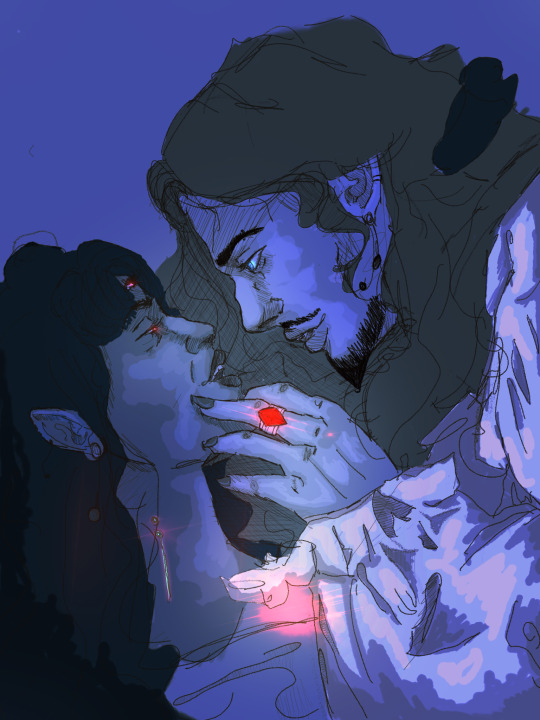
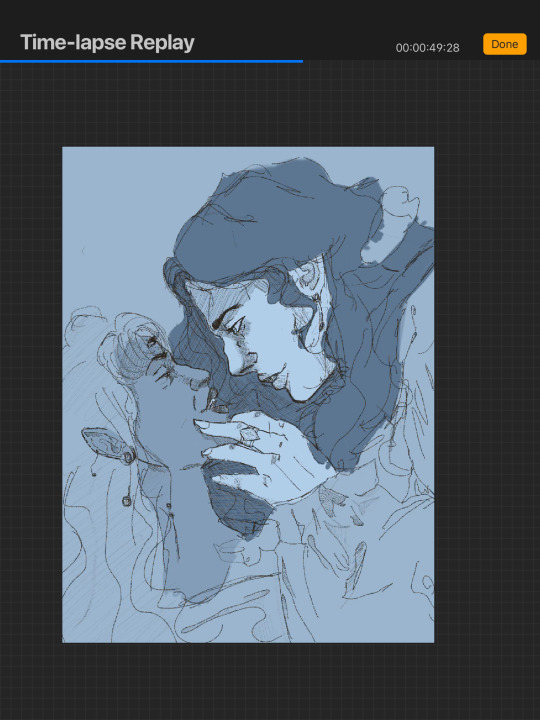
//original scene from interview with a vampire + some proofs
.
.
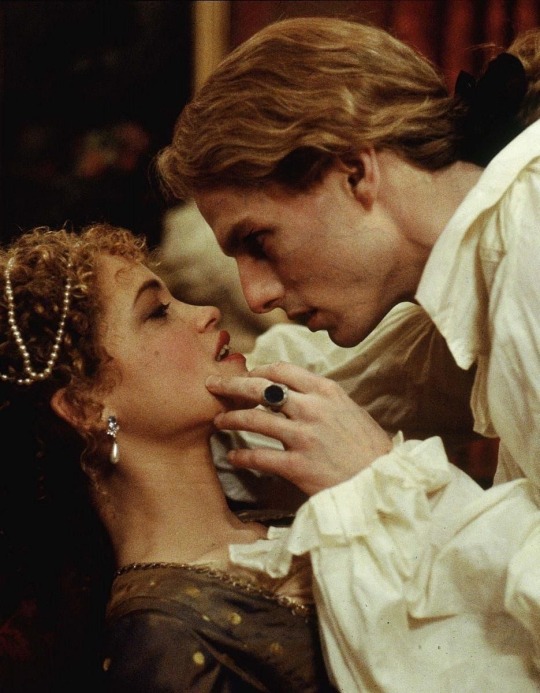
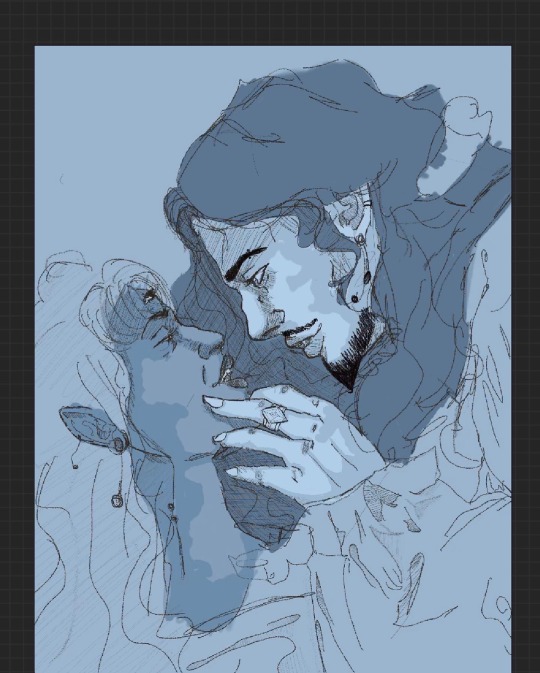
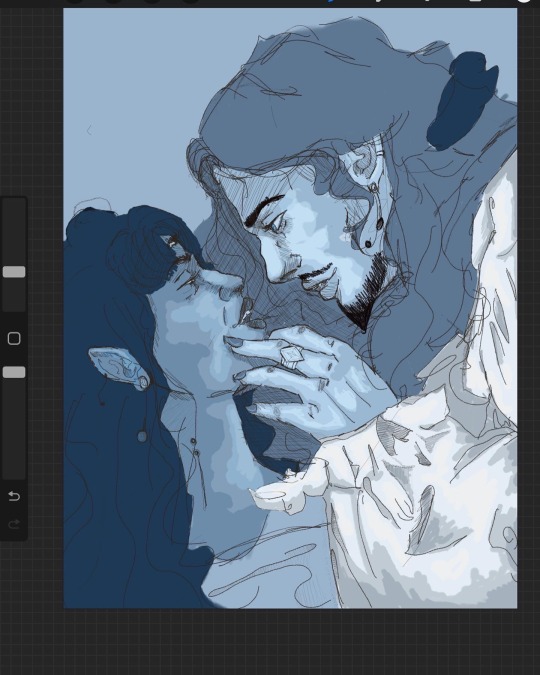
#oc artwork#oc art#skyrim#skyrim art#skyrim oc#interview with the vampire#vampire aesthetic#vampire art#lighting#blue#didgital drawing#digital arwork#digital#dunmer#morrowind#the elder scrolls
5 notes
·
View notes
Text
Mochizuki Jun The Case Study of Vanitas Anime da Vinci Interview - pt. 2 -
An interview conducted by Anime da Vinci with mangaka Mochizuki Jun regarding The Case Study of Vanitas. Part one of my translation is here. I said it was going to be two parts there, but I’ll be releasing it in 3, sorry.
In summary: A more in depth description of how Vanitas and Noé were developed, how Mochizuki wants to represent their relationship, Mochizuki’s feelings on “evil,” and how she wants to incorporate death.
Includes translation notes.
Initially, Vanitas was the vampire, and Noé was the human.
- The way Vanitas and Noé are depicted within the story is quite charming. How did those two come to be as they are? With that, how would Mochizuki Jun-sensei go about introducing “this person is Vanitas,” and “this person is Noé (a vampire)”?
Mochizuki Jun: Initially, Vanitas was the vampire, and Noé was the human. Drawing from Sherlock Holmes, Vanitas took the role of Holmes and Noé of Watson. But, no matter what I did with that concept, my boss would look at it and go “I mean, looking at this, the feeling I get is just... well, isn’t this kind of ordinary? In my opinion, it’s just... not interesting,” when providing consultation. Then, I got the advice of “hey, what if the vampire and the human roles were switched?!” I was like “huh? A human Holmes and a vampire Watson? Wait, that’s- really extremely super cool!!” And it felt like I was suddenly looking at a completely different landscape. Vanitas’ prominent canine teeth are vestiges from those drafts.
MJ: A different friend of mine criticized my design for Vanitas, which is how he ended up developing those two-level side bangs. Noé’s design completely changed from the first drafts to serialization. Originally he had glasses and was more of the straight man of the comedy duo. I was forced to part with those and other ideas.
MJ: If I were to introduce them with a single phrase, it would be like:
Vanitas - A self loathing deviant.[1]
Noé - Body of a man, spirit of a maiden!
- Speaking of those two, even though they’re always butting heads, they still choose to be alongside one another, and end up fighting together to cover each other’s backs. That relationship is so endearing. In what manner does Mochizuki-sensei mean to depict the two of them?
MJ: They’re not friends, and their goals don’t exactly align[2]. Sort of contrarily, they always fight like dogs but still feel a mutual draw to one another. There’s not enough room to cover it all here, you know what I mean? Noé’s naivety frustrates Vanitas, but his foolish earnestness makes Vanitas harbor a desire to be close to him. Noé sees the light of Vanitas’ power which can do things far beyond Noé’s ability, and feels an attraction to the darkness that lurks in Vanitas’ shadow.
- The characters of Vanitas, especially in the case of when a depressed disposition shines through a carefree countenance, always have such impactful expressions. Please tell us if you have any points of fixation when it comes to drawing expressions.
MJ: I don’t have any specific points of fixation when it comes to expressions, but I usually end up redrawing the expression several times when I make a new panel. Whenever I draw a character’s face I end up making the same expression on my own face, so I leave a really bad impression when I draw in front of other people...
MJ: Aside from that, when I read manga by other people I’ll often go “oh, that’s a really good expression!” In those cases, I’ll try to analyze what about the drawing communicates the right emotion, follow that as closely as possible, and keep it in mind when I increase the stock of my own drawn expressions. I wanna get good at drawing...
Try to contain meaningless death within The Case Study of Vanitas.
- Though there are even humans who regard vampires as enemies, neither seems to be “good,” nor does either seem to be “evil.” Please tell us about the feelings you held when you decided to depict neither side as an axis of good or evil.
MJ: Simply rewarding good and punishing evil is bad storytelling. Those easy to swallow “I’m looking for world domination!” type characters always make me ask “Why’s this character want world domination?” “How do they intend to achieve it? For what purpose?” “What about their history led them to that conclusion?” “In the first place, when talking about evil, how was it that what we’re calling evil was decided to be evil?” It’s a really obnoxious way to get my head spinning with ideas as I try to look for an answer I can accept. Before I know it, that “easy to understand enemy” doesn’t really exist to me, no matter where I look.
MJ: Since I wholeheartedly reject “evil,” I think authors who create antagonists whose feelings you can see and relate to are extremely admirable.
- That monologue which began in the first chapter’s finale seemed to contain all sorts of foreshadowing. Has Mochizuki-sensei already envisioned the plot all the way up to the final chapter?
MJ: I haven’t firmly decided all the way to the end yet since I’m the type to not know what she wants to draw, but I’ve pretty much got the rough outline until the story’s conclusion. On my way to that final station called “the story’s end,” there are some stations at which I’m absolutely, inevitably going to have to stop. Still, I feel like it’s up to me as to which route I take on my way there.
MJ: For he who may have stuck with me since my previous works, I’m trying my hardest to work my way up and make the railway line of this current story feel more like a roller coaster.[3] Since in my previous work, Pandora Hearts, I wanted to make a bunch of distinctive events on their way to the last scene, which was supposed to be the highlight of that character’s arc. Because of that, most deaths in Pandora Hearts were made to be cathartic. In The Case Study of Vanitas, I think I want to try to include completely meaningless death.
---
[1] The word Mochizuki uses is 自分嫌い天の邪鬼. 自分嫌い is pretty directly just “self hating,” but 天の邪鬼 literally means “demon from heaven.” In speech, it’s used to mean “pervert” or “contrarian.” The manga translates 天邪鬼 (the same word spelled differently) as “bad tempered,” which I don’t like.
[2] Since I saw another translation for this part: Mochizuki specifically says 仲間とも違う, nakama to mo chigau, which means more literally “[their relationship] is also a different thing than a comrade.” 仲間 is sort of an infamous word among Japanese translation circles. It frequently implies “friend,” but is closer to “person with whom one finds commonality [in faction, ideas, goals, etc.]” Another translation might be “kindred spirit.”
[3] Yeah she starts using a train metaphor it wasn’t fun to translate
-
Part 3 here.
122 notes
·
View notes
Text
Matsuri Hino Interview (May ‘06)
Taken From “Magical Manga - Our Interview with Matsuri Hino” by Jenifer Morgan
Featured in Shojo Beat Volume 2, Issue 5
Source (x)
Once upon a time, Matsuri Hino was a bookshop keeper. One day she decided to become a manga artist, and all of nine months later, in 1995, she published her first manga title, Kono Yume ga Sametara (When This Dream Is Over), in Japan's LaLa DX magazine. Despite her swift ascension to professional manga creator, Hino's rich illustrations and enchanting storytelling make her success anything but surprising. Today, all four volumes of her popular series MeruPuri are available in English. Her newest title, Vampire Knight, follows hard upon its heels—serialization in English will begin right here in Shojo Beatstarting this July! In honor of these exciting events, we asked Hino to give us some insight into her magical stories and her craft. Here's what she had to say.
Shojo Beat: Have you always had an interest in fairy tales and magical kingdoms?
Matsuri Hino: I read most of the Western fairy tales and Japanese folk tales when I was a child, and they I've had an active (or blossoming, perhaps) imagination since I was a child. I have so many stories I still like. Also, I've liked American movies for a long time, so they may have influenced me unconsciously. I enjoy creating manga so much, because it's like I am doing all of movie making alone, including storytelling, script writing, costume design, camera work, and directing. It is hard, though.
SB: Did you pattern the elaborate costumes of the characters in your series MeruPuri after those of real-life royal families? If not, how did you come up with the designs?
MH: I took tips from Turkish native costumes to create the formal clothes of the prince. Other than that, I enjoy coming up with costume designs by randomly mixing my preferences and my little limited knowledge of clothing.
SB: In MeruPuri, what sparked your interest in creating a supposed love affair between a teenage girl (Airi) and a little boy (Aram)? What was your frame of mind as you developed the romantic aspect of the story?
MH: I thought it might be interesting to create a heroine who cherishes her own world (a life plan, happiness in everyday life, and so on), then meets someone who overturns all of her values. This resulted in the "prince from the magic kingdom" setting, and in order to keep the air of a fairy tale, I thought it would be better to make Aram a young boy, who is not sarcastic, but honest and pure. I thought it would be romantic to girls' minds to have such a boy think hard, grow a little, and say "I love you" without even an ounce of a lie in his heart.
SB: What do you find most fulfilling about your work? What is its most challenging aspect?
MH: What is most fulfilling is the very act of transforming the materials in my mind into manga, a form of reading material. As a joke, we often compare it to delivering a baby. And it is awesome when I draw something that I feel is interesting. By contrast, it is really painful when I cannot draw something I feel is good. In those situations, I continue to redraw until deadline.
SB: What was the most difficult part of writing and drawing MeruPuri? What was the easiest part?
MH: Difficult parts included drawing Aram's unruly hair and understanding Aram. The easy part was...I cannot think of one.
SB: How important is it for aspiring manga creators to attend art school? How about writing classes? Please describe your background.
MH: I did not learn anything except for what I got out of a mandatory art class at school. But I've liked creating things since I was little, and I started drawing manga as a hobby when I was a teenager. These things had a significant impact. I don't think it would be disadvantageous to go to an art school, but what's important is having an inquiring mind and aspirations.
SB: How do you balance your time between your work and private life?
MH: Since starting serialization of Vampire Knight, I have been working almost constantly, except when I am eating, taking a bath, or sleeping. This is crazy. My doctor warned me that I could die from overwork. But I love this job and it is fulfilling, so I'll try to think of it as part of my job and keep up until the end of serialization. But I do not want to die, either, so I'll try to take care of my mental and physical health as much as possible.
SB: Would you ever consider taking up a profession other than that of manga creator? Are there other fields you'd like to pursue or wanted to pursue as a child?
MH: When I was in grade school, I wanted to work in a flower shop or become a nurse or a painter. When I was in junior high, I wanted to be a scientist or an auto mechanic. When I was in high school, I wanted to be a manga creator or do a job deeply involved with economics. When I was a college student, I wanted to be a novelist or do a job related to architecture or interior design. I had so many jobs I wanted to do, but manga creator is the only one I could decide on and act on. Though I still have an interest in many occupations, I will focus my energy on drawing manga as long as I have things I want to draw.
SB: Do you like to sing karaoke? If so, what are some of your favorite songs?
MH: I love it, even though I haven't been able to go recently. I like lots of songs, including enka [Japanese ballads], anime theme songs, and pop.
SB: Would you say you are an optimist or a pessimist by nature? How does your attitude affect your work?
MH: I aim for an "optimistic self," but I easily become very pessimistic. However, I am strong, because I know that I have the power to pick myself up after feeling down, when I have to—though the waiting time is long and painful. To make sure these negative feelings don't have a bad influence on my work, I try to always keep an objective view.
SB: Your Vampire Knight series will be published in English for the first time this summer. What attracted you to the subject of vampires?
MH: I have been attracted to both fairy tales and vampires for a long time, although I can't remember why. If I start talking about one of my favorite subjects–vampires–it is going to take too long, so I won't do that, but it is a subject that is very romantic and makes my heart race.
SB: Hanabusa Aido of Vampire Knight can freeze anything with his touch. Do other characters in the series have special powers?
MH: Yes, they do. I'm planning to reveal them one by one.
SB: Which Vampire Knight character do Japanese fans favor, Zero or Kaname? Why?
MH: There are a few who've said they like both characters, but currently fans are totally divided into two groups, and their popularity is fifty–fifty. Zero has a hidden kindness and Kaname has a mysterious personality. It is hard to generalize why fans like them, but they are reading deeply into the characters, and as a creator, I'm very happy to see that.
SB: Do you have a message for American readers who will be encountering Vampire Knight for the first time?
MH: Because I want to cherish my internal image of vampires, I have drawn some aggressive scenes, but my goal is to show the romantic excitement of shojo manga, so romantic feeling and action will be coming along. I hope you enjoy it!
1 note
·
View note